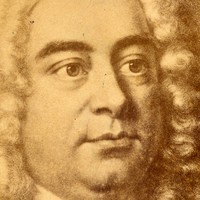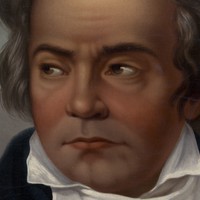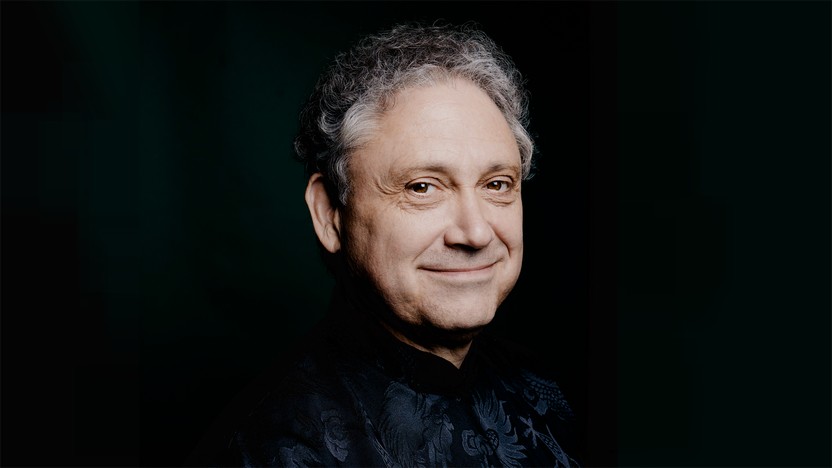Details

George Frideric Handel
Selections from Water Music

Johann Sebastian Bach
Orchestral Suite No. 4
From 1723 until his death in 1750, Bach directed music for the principal churches of Leipzig. While his church duties required him to compose mostly sacred music, he found a secular outlet in the Collegium Musicum, an amateur ensemble originally founded by Georg Philipp Telemann (1681-1767) during his student days. Bach wrote four Orchestral Suites—or Ouvertures, as he called them—for the Collegium Musicum, including the Orchestral Suite No. 4 in D major, composed around 1725. (The numbering of the suites, incidentally, has no relationship to their chronology; the first and fourth suites are the earliest, from around 1725, the third dates to circa 1731, and the second probably appeared in 1739.)
The Fourth Orchestral Suite opens with an Overture modeled after the French style. It launches into a grand introduction built from dotted rhythms, continues with a fast fugue in a rolling 9/8 meter, and recaps the slower, ceremonial music at the end. As was often the case, Bach repurposed this secular music for a sacred work, the Cantata Unser Mund sei voll Lachens (BWV 110) that he introduced on Christmas day in 1725.
The middle movements of the suite constitute a series of dances borrowed from French court traditions. The Bourrées are arranged in a da capo pairing, in which the music returns “to the head” (da capo in Italian) of the first dance at the end of the second. Both sections incorporate fanciful accompaniment figures that nearly outshine the foreground themes—a rising triad in the first Bourrée, and scurrying sixteenth-notes in the second. The Gavotte features a heavy pulse of two beats per measure, with the introductory upbeat of each phrase emphasized. The bass instruments are the first to introduce a quick, galloping figure that circulates through the orchestra and enlivens the stout cadence of the music. The Menuets form another da capo set, elaborating the elegant dance style in 3/4 meter. The trumpets and timpani sit out both Menuets, and the second Menuet thins the texture further, leaving just strings and harpsichord. The brief absence of the trumpets and timpani makes their entrance all the more brilliant at the start of the closing Réjouissance [rejoicing], a buoyant form associated with celebrations.
Aaron Grad ©2008
 Listen to Audio
Listen to Audio
Ludwig van Beethoven
Symphony No. 4
Ludwig van Beethoven’s first two symphonies took their cues from Franz Joseph Haydn, the formidable “father of the symphony” and Beethoven’s teacher for a short while after he moved to Vienna. Soon enough, Beethoven honed a symphonic voice that eclipsed even Haydn’s in its scale and grandeur, beginning with the massive Symphony No. 3 (Eroica) from 1803 and continuing in the fateful Symphony No. 5 from 1808. Sandwiched between those landmark symphonies was a smaller specimen, the Symphony No. 4 in B-flat Major, underscoring Beethoven’s lasting debt to Haydn.
Beethoven composed the Fourth Symphony in mid-1806, and he first unveiled it at a private concert in March 1807. Close followers of Haydn’s London symphonies might have noted Beethoven’s nod to the Symphony No. 102, which likewise begins with a held B-flat in octaves. Whereas Haydn made a subtle detour to B-flat minor in his introduction, Beethoven fully embraced the move to the minor scale, until the harmonies sneak back to the major key via one of the score’s many slippery and surprising transitions, launching the Allegro vivace body of the movement.
The Adagio begins with an introductory figure that seems to have lingered from the end of the first movement, preparing the way for a sweet, singing melody. The third movement was labeled a Minuet, but the quick and boisterous music is really a scherzo in all but name, representing Beethoven’s faster and wilder take on Haydn’s dancing diversions.
Beethoven’s finale is full of Haydn’s impish wit, and it saves the best punch line for the end, when the violins, as if thoroughly exhausted, slowly trudge through the main theme one last time. After a similarly lethargic response from the bassoons and then the cellos and basses, the group rallies to end the symphony with an energetic flourish.
Aaron Grad ©2022
About This Program
Artistic Partner Richard Egarr guides us through a journey that traces the German symphonic tradition, originating in the music of George Frideric Handel’s large-scale works like his famed Water Music orchestral suites and leading to Ludwig van Beethoven. Over the course of this program, the SPCO performs the final of Johann Sebastian Bach’s four orchestral suites — one of the musical throughlines woven through our 2025.26 season.

